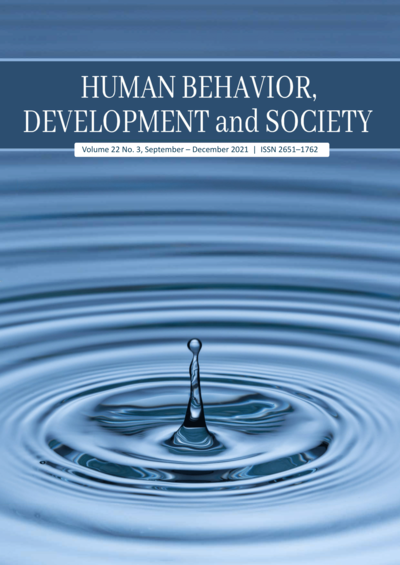Bidayuh Proverbs with Animal and Plant Elements: A Reflection of Culture and Philosophy
Main Article Content
Abstract
Indigenous communities refer to animals and plants extensively in their folk proverbs. In this study an examination was conducted involving Bidayuh proverbs, with animal and plant elements, of the Bau Jagoi community in Sarawak, Malaysia by (a) categorising them according to the type and frequency of animal and plant elements used, and (b) analysing their implied and implicit meaning using inquisitive semantics approach. Data were collected from interviews with 12 Bidayuh informants aged 23 to 84 who lived in the same village. A total of 33 Bidayuh proverbs were elicited comprising 20 with animal elements and 13 with plant elements. The behaviours of the animals were associated with mostly negative behaviours in human whereas the characteristics of the plants were used to describe desirable human traits and appearance. The proverbs were also used to describe complex situations, teach moral values and good manners, express intense feelings, and give advice about life. Their deep meaning was related to the people’s living environment and way of life, their thinking and ethics, their beliefs, and customary practices, which reflect their culture and philosophy.
Article Details

This work is licensed under a Creative Commons Attribution-NonCommercial-NoDerivatives 4.0 International License.
Copyright: Asia-Pacific International University reserve exclusive rights to publish, reproduce and distribute the manuscript and all contents therein.
References
Ciardelli, I., Groenendijk, J., & Roelofsen, F. (2019). Inquisitive semantics. Oxford University Press.
Jalaluddin, N. H. (2014). Semantik dan akal budi Melayu [Malay semantics and common sense]. Penerbit UKM.
Kayad, F., & Ting, S. (2021). Attitudes towards Bidayuh language kindergartens in Sarawak, Malaysia. International Journal of Social Science Research, 3(2), 14–26.
Kheung, L., & Adruce, S. (2018). The demographic profile and sustainability growth of the Bidayuh population of Sarawak. International Journal of Academic Research in Business and Social Sciences, 8(14), 69–78.
Lauhakangas, O. (2019). The functions of animal metaphors in proverbs. In R. Soares & O. Lauhakangas (Eds.), 12th interdisciplinary colloquium on proverbs, ACTAS ICP18 Proceedings (pp. 582–594). https://www.researchgate. net/publication/337593008_THE_FUNCTIONS_OF_ANIMAL_METAPHORS_IN_PROVERBS
Mieder, W. (2004). Proverbs: A handbook. Greenwood Press.
Nornis, S., & Saamah, M. R. (2013). Haiwan sebagai perlambangan dalam peribahasa orang Semai [Animals as a symbol in the proverb of the Semai people]. GEMA Online Journal of Language Studies, 13(1), 83–98.
Pareek, A., & Trivedi, P.C. (2014). Common folk proverbs in relation to environment and plants in Rajasthan, India. Journal of Indian botanical Society, 93(1 & 2), 100–104.
Ridu, R. S., Jitab, R., & Noeb, J. (2001). King Siliman and other Bidayuh folk tales. University Malaysia Sarawak: The Institute of East Asian Studies.
Ridu, R. S., Jitab, R., & Noeb, J. (2006). Language development in Bidayuh: Past, present and future. In C. R. Rensch, C. M. Rensch, J. Noeb & R. S. Ridu (Eds.), The Bidayuh language: Yesterday, today and tomorrow (pp. 1–27). Dayak Bidayuh National Association.
Salamh, S. B., & Maalej, Z. A. (2018). A cultural linguistics perspective on animal proverbs, with special reference to two dialects of Arabic. Arab World English Journal for Translation & Literary Studies, 2(4), 21–40.
Shamsutdinova, E. K., Martynova, E. V., Eremeeva, G. R., & Baranova, A. R. (2017). Proverbs and sayings related to animals in Arabic, English and Tatar Press. The Turkish Online Journal of Design, Art and Communication TOJDAC, Special Edition, 799–804. https://doi.org/10.7456/1070ASE/085
Sperber, D., & Wilson, D. (1986). Relevance: Communication and cognition. Blackwell.
Syzdykov, K. (2014). Contrastive studies on proverbs. Procedia - Social and Behavioral Sciences, 136, 318–321.
Tosam, M. J. (2014). The philosophical foundation of Kom proverbs. Journal on African Philosophy, 9, 1–27. https://www.researchgate.net/profile/Mbih-Tosam/publication/281115695_The_Philosophical_Foundation_ of_Kom_Proverbs/links/5d4f9b27a6fdcc370a8c30b4/The-Philosophical-Foundation-of-Kom-Proverbs.pdf
UNESCO. (2003). Convention for the safeguarding of the intangible cultural heritage. http://unesdoc.unesco.org/ images/0013/001325/132540e.pdf
Zhang, X. (2016). Language as a reflection of culture: On the cultural characteristics of Chinese and English proverbs. Intercultural Communication Studies, 25(3), 275–291


